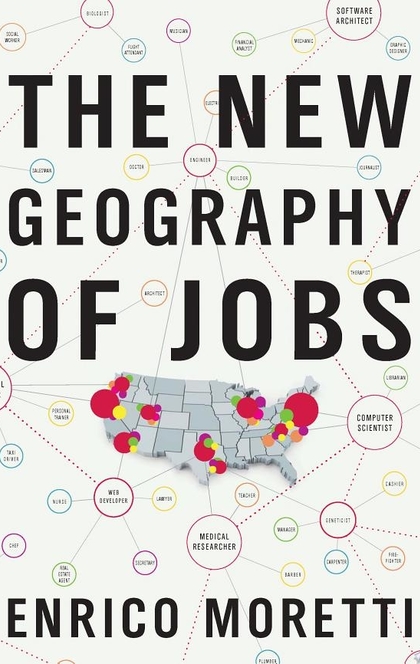The New Geography of Jobs
Updated:
7 Sep 2020
From a rising young economist, an examination of innovation and success, and where to find them in America. An unprecedented redistribution of jobs, population, and wealth is under way in America, and it is likely to accelerate in the years to come. America's new economic map shows growing differences, not just between people but especially between communities. In this important and persuasive book, U.C. Berkeley economist Enrico Moretti provides a fresh perspective on the tectonic shifts that are reshaping America's labor market—from globalization and income inequality to immigration and technological progress—and how these shifts are affecting our communities. Drawing on a wealth of stimulating new studies, Moretti uncovers what smart policies may be appropriate to address the social challenges that are arising. We're used to thinking of the United States in dichotomous terms: red versus blue, black versus white, haves versus have-nots. But today there are three Americas. At one extreme are the brain hubs—cities like San Francisco, Boston, Austin, and Durham—with a well-educated labor force and a strong innovation sector. Their workers are among the most productive, creative, and best paid on the planet. At the other extreme are cities once dominated by traditional manufacturing, which are declining rapidly, losing jobs and residents. In the middle are a number of cities that could go either way. For the past thirty years, the three Americas have been growing apart at an accelerating rate. This divergence is one the most important recent developments in the United States and is causing growing geographic disparities is all other aspects of our lives, from health and longevity to family stability and political engagement. But the winners and losers aren't necessarily who you'd expect. Moretti's groundbreaking research shows that you don't have to be a scientist or an engineer to thrive in one of these brain hubs. Among the beneficiaries are the workers who support the "idea-creators"—the carpenters, hair stylists, personal trainers, lawyers, doctors, teachers and the like. In fact, Moretti has shown that for every new innovation job in a city, five additional non-innovation jobs are created, and those workers earn higher salaries than their counterparts in other cities. It wasn't supposed to be this way. As the global economy shifted from manufacturing to innovation, geography was supposed to matter less. But the pundits were wrong. A new map is being drawn—the inevitable result of deep-seated but rarely discussed economic forces. These trends are reshaping the very fabric of our society. Dealing with this split—supporting growth in the hubs while arresting the decline elsewhere—will be the challenge of the century, and The New Geography of Jobs lights the way.
